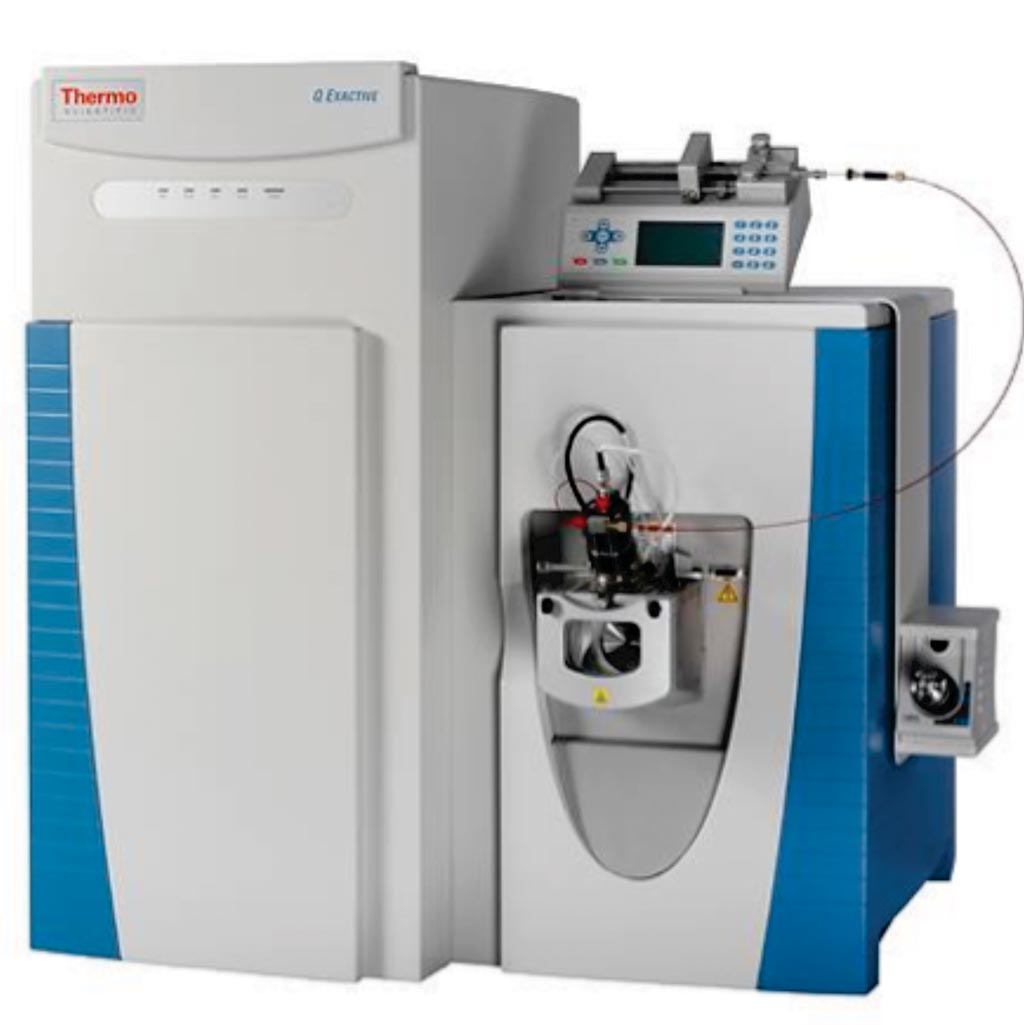Proteins Used for Diagnosing ALS
By LabMedica International staff writers
Posted on 20 Nov 2018
Proteins have been identified that may be useful in both earlier diagnosis of Amyotrophic Lateral Sclerosis (ALS) and in more accurate disease prognosis. ALS, often referred to as Lou Gehrig's disease, is a progressive, neurodegenerative disease that affects the brain and spinal cord. Currently, there is no effective treatment or cure.Posted on 20 Nov 2018
No molecular biomarkers of neither diagnostic nor prognostic value exist for ALS. Diagnosis is often delayed one to two years from symptom onset while other confounding disorders are excluded and appropriate phenotypes present themselves. Since cerebrospinal fluid (CSF) is proximal to site of injury, it is more likely to be enriched with biomarkers of ALS compared to plasma and is often the fluid of choice for ALS and other diseases of the central nervous system.

Image: Q Exactive hybrid quadrupole-Orbitrap mass spectrometer (Photo courtesy of Thermo Fisher Scientific).
Scientists from North Carolina State University (Raleigh, NC, USA) obtained samples of cerebrospinal fluid (CSF) and blood plasma from 33 ALS patients and 30 healthy individuals. The team used mass spectrometry and they identified over 1,000 different proteins in the fluids, and then used advanced machine learning techniques to develop models that consisted of multiple proteins. Nanoflow liquid chromatography tandem mass spectrometry (LC MS/MS) was performed and peptides were loaded directly on column at a flow rate of 400 nL/min. Peptides were separated at a flow rate of 300 nL/min using a 30 cm self-packed column. Data were collected using a top 12 data-dependent acquisition method on a quadrupole orbitrap.
The team selected two proteins that looked promising for both diagnostic and prognostic applications, and then conducted further analysis to validate their usefulness as biomarkers. The proteins, chitinase-3 like1 and alpha-1-antichymotrypsin, are associated with immune-system activation in the brain and thus could also be used as an objective way to measure effectiveness of current therapies directed at tempering this pathway. Proteins involved in complement activation, acute phase response and retinoid signaling pathways were significantly enriched in the CSF from ALS patients. Interestingly, immune-system activation is also known to play a role in other neurodegenerative diseases, such as Parkinson's and Alzheimer's, indicating the assays could potentially be used in these diseases as well.
Michael S. Bereman, PhD, an assistant professor and lead author of the study said, “Our goal is to create a panel of protein targets that could give doctors a quicker path to diagnosis for ALS patients, as well as an objective way to measure disease progression, or to test the efficacy of new drugs. Our next steps will be to look at changes in these proteins and their signaling pathways over time in fluids that have been longitudinally collected from ALS patients.” The study was published on November 5, 2018, in the journal Scientific Reports.
Related Links:
North Carolina State University









 assay.jpg)




